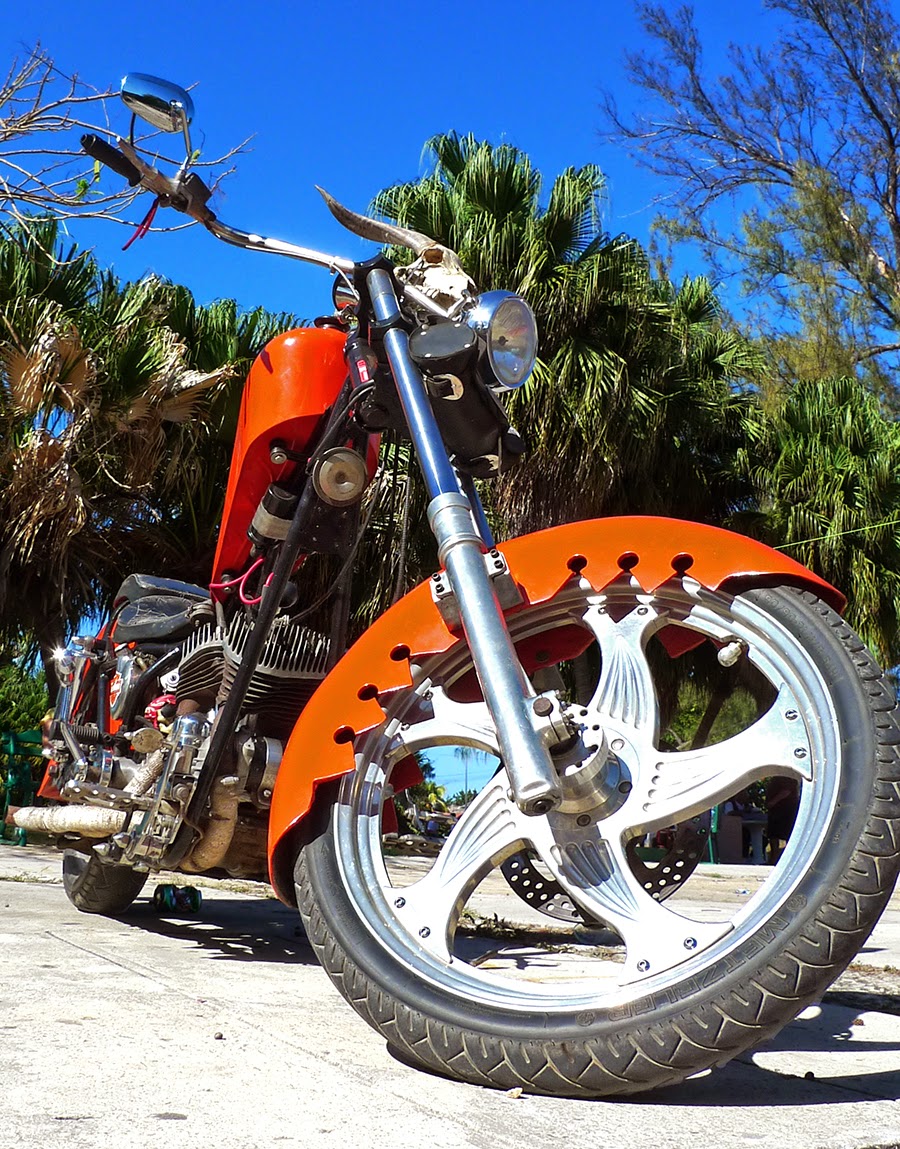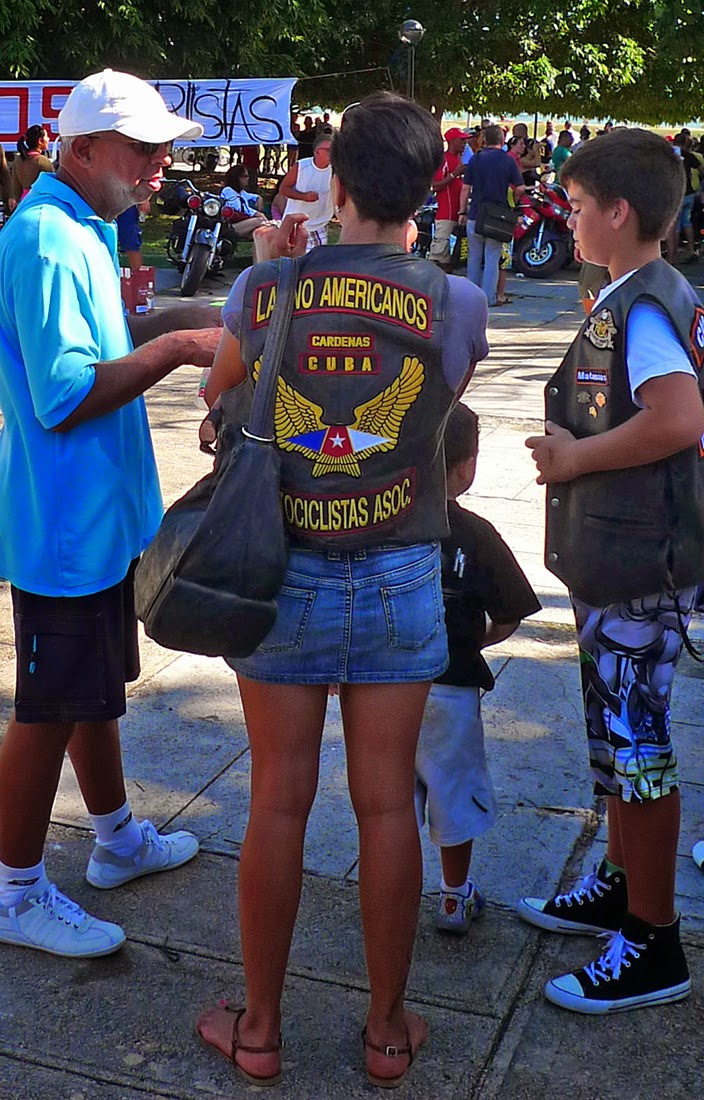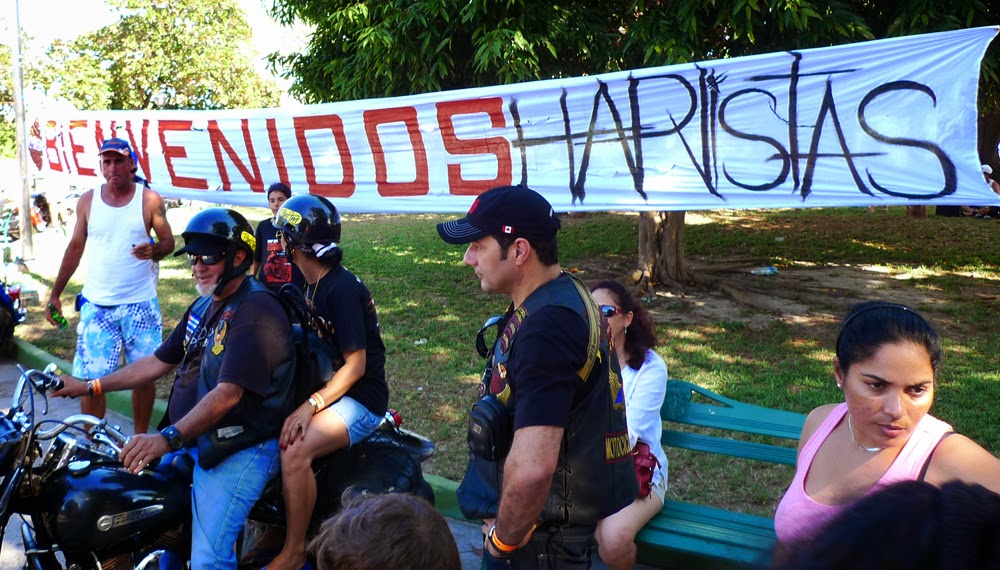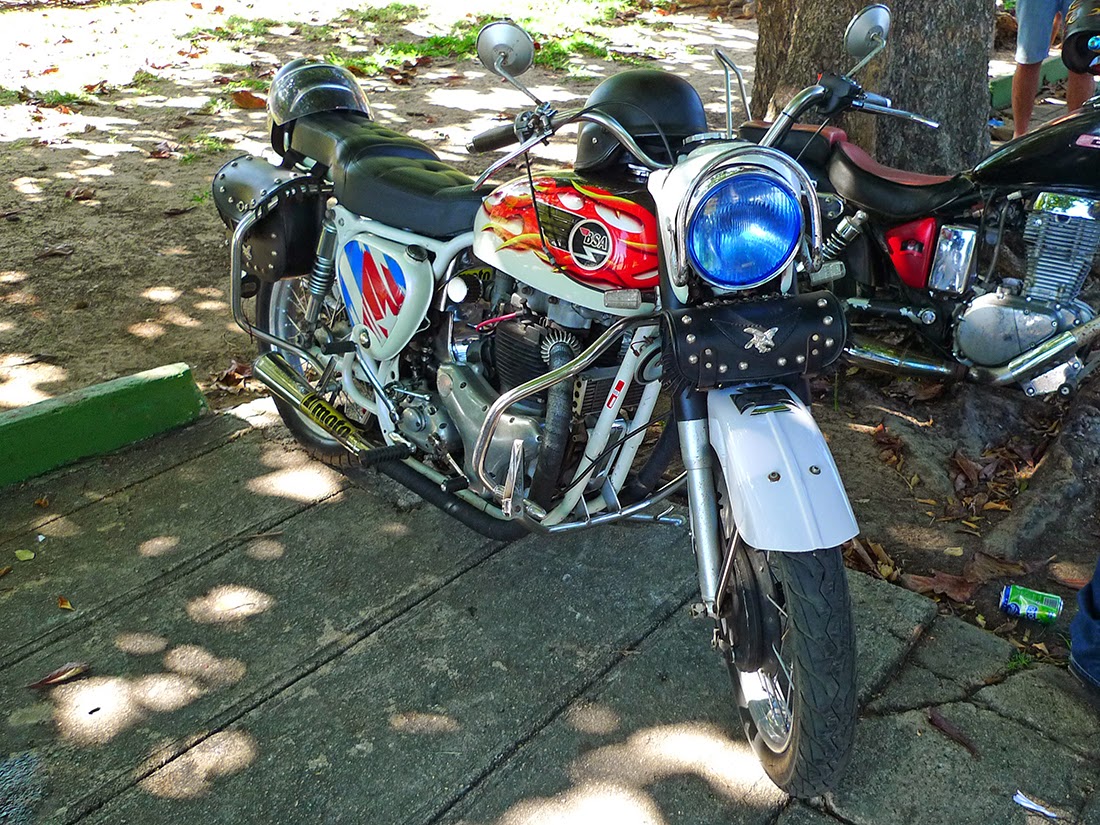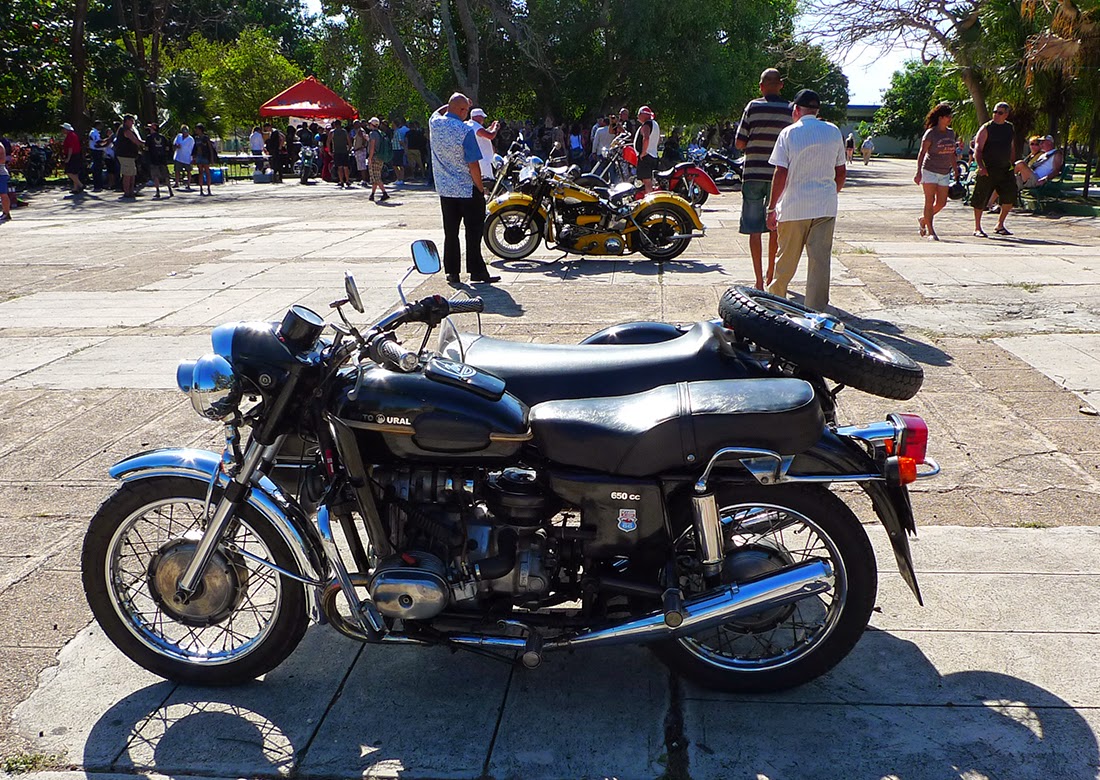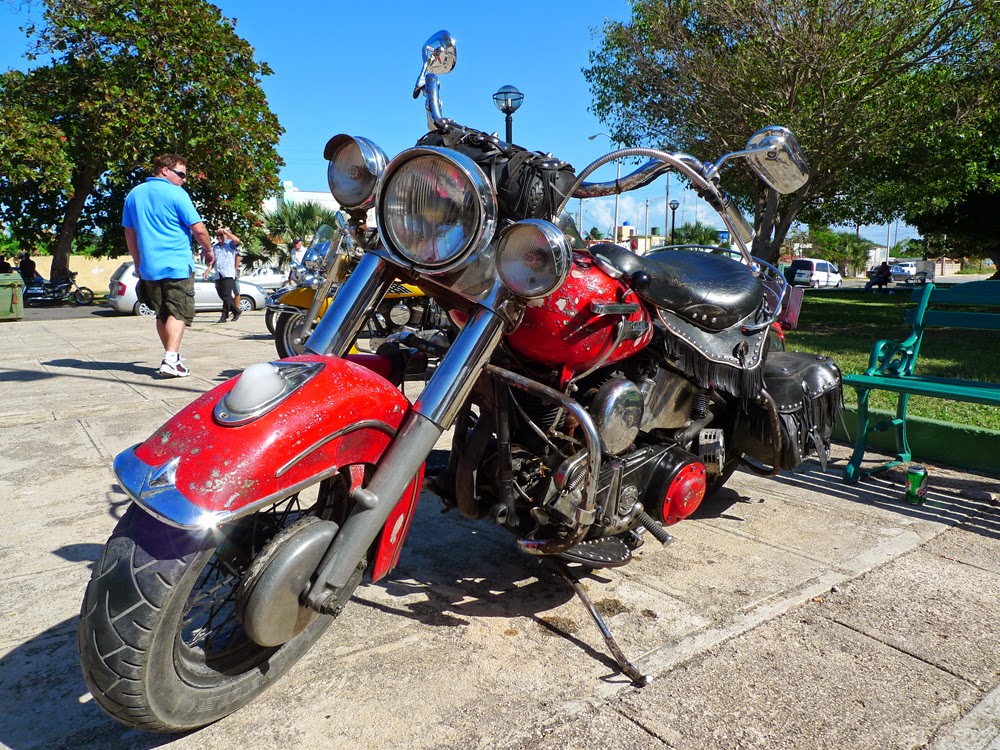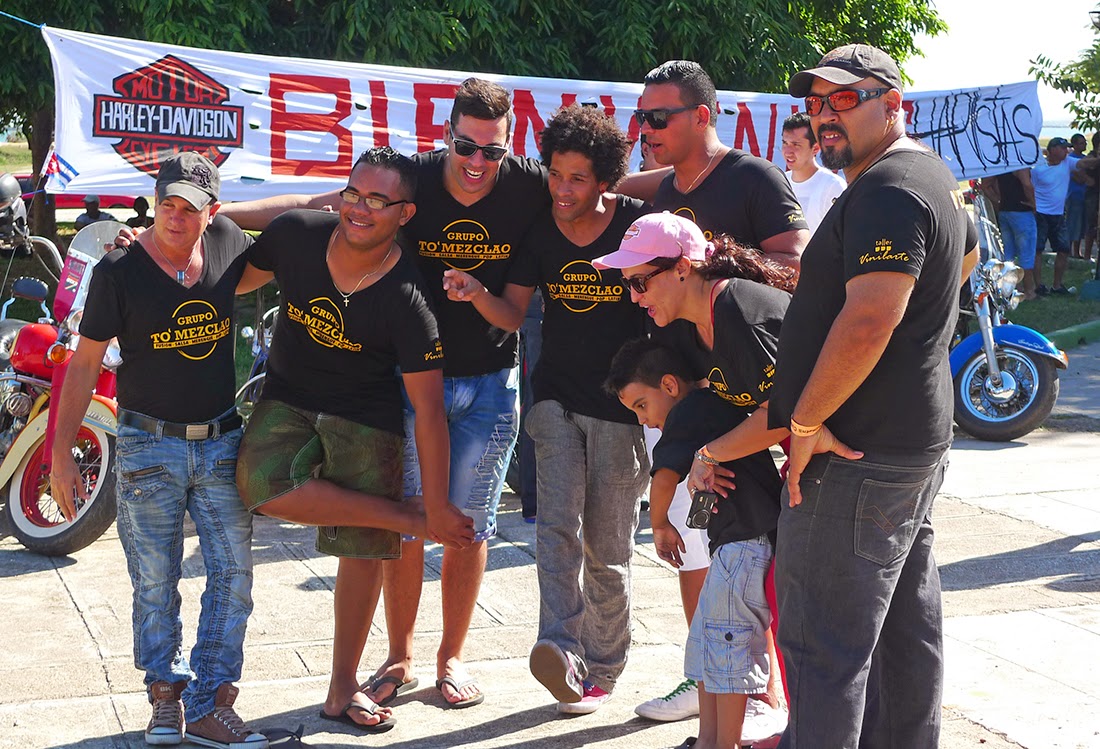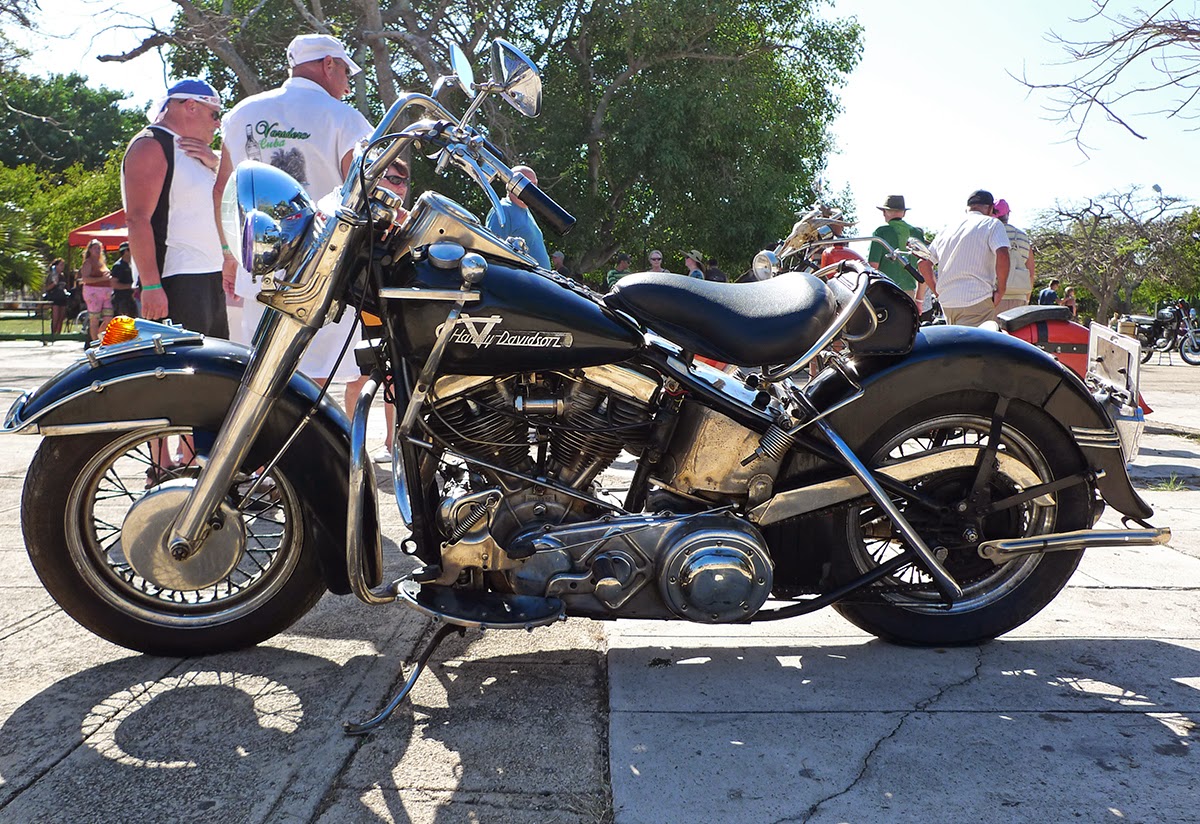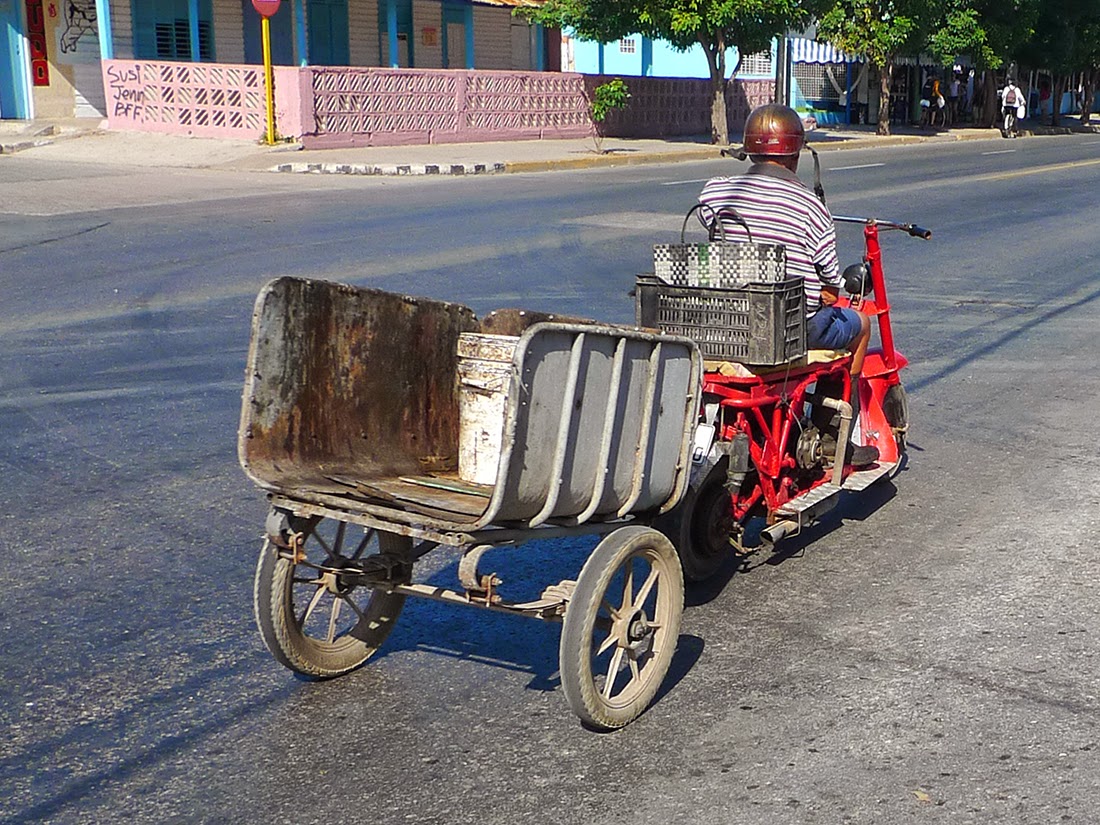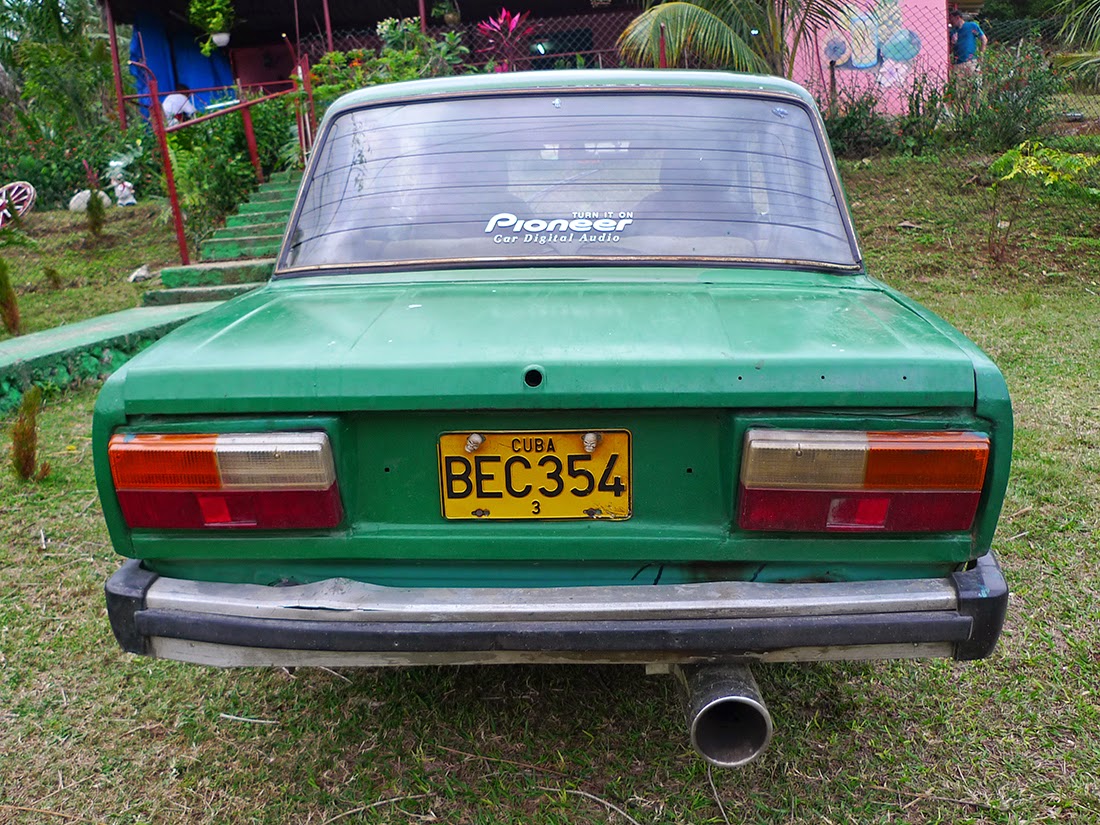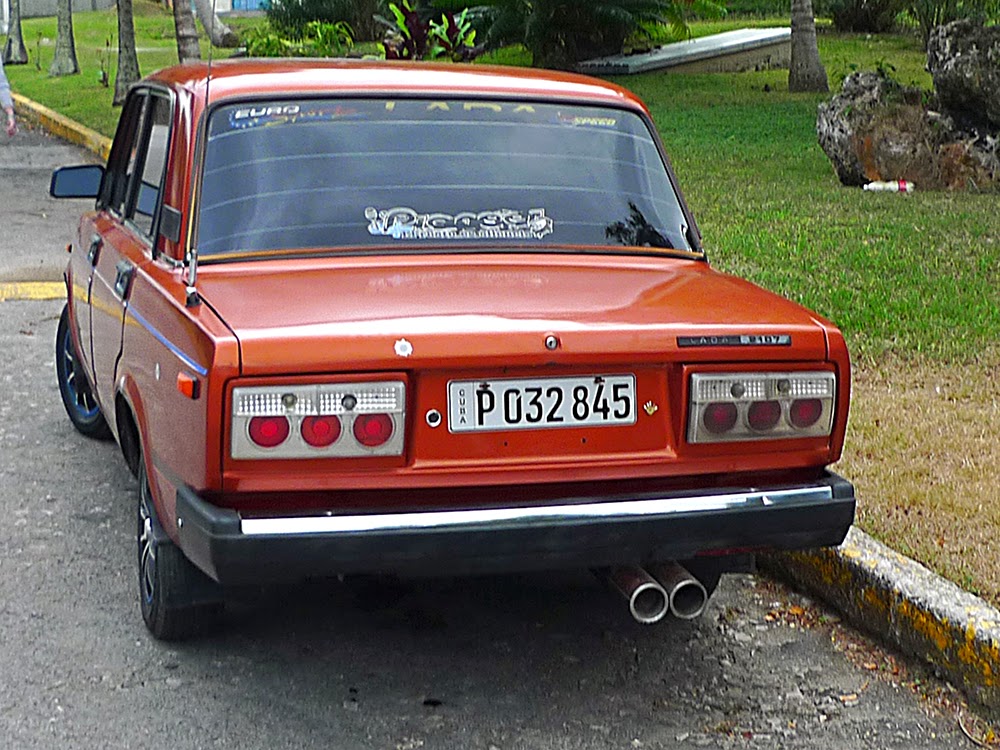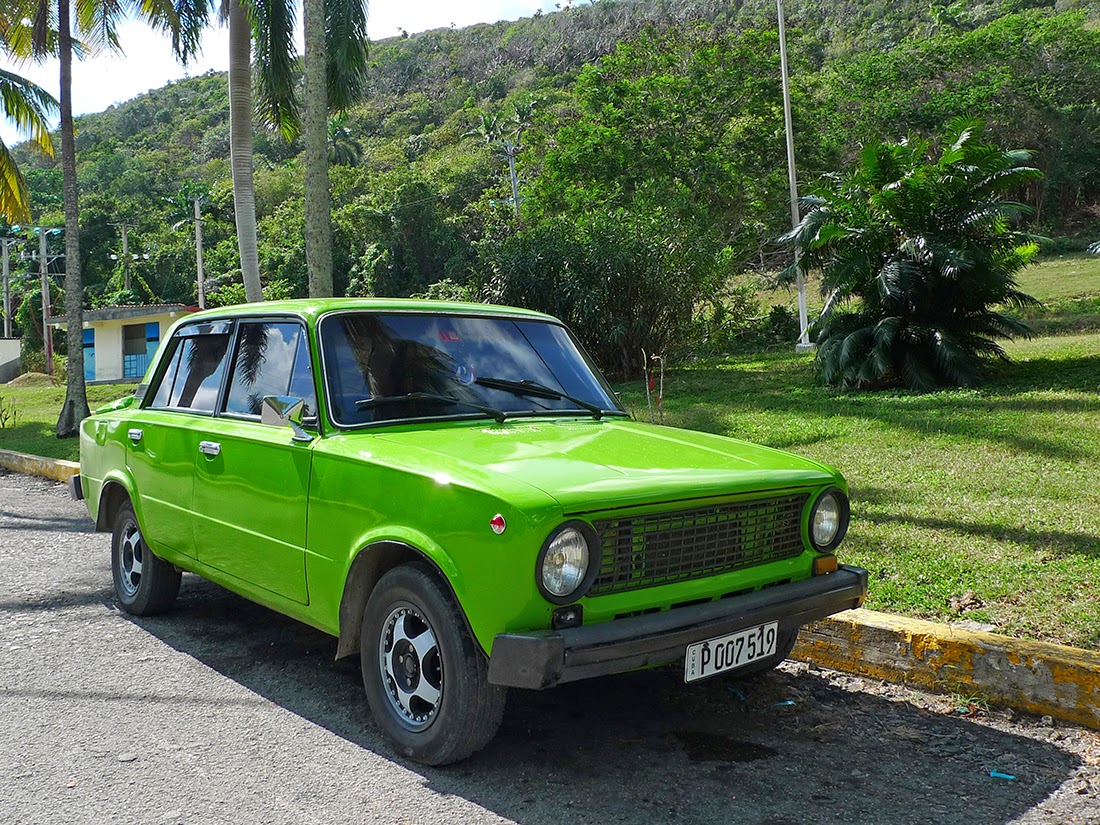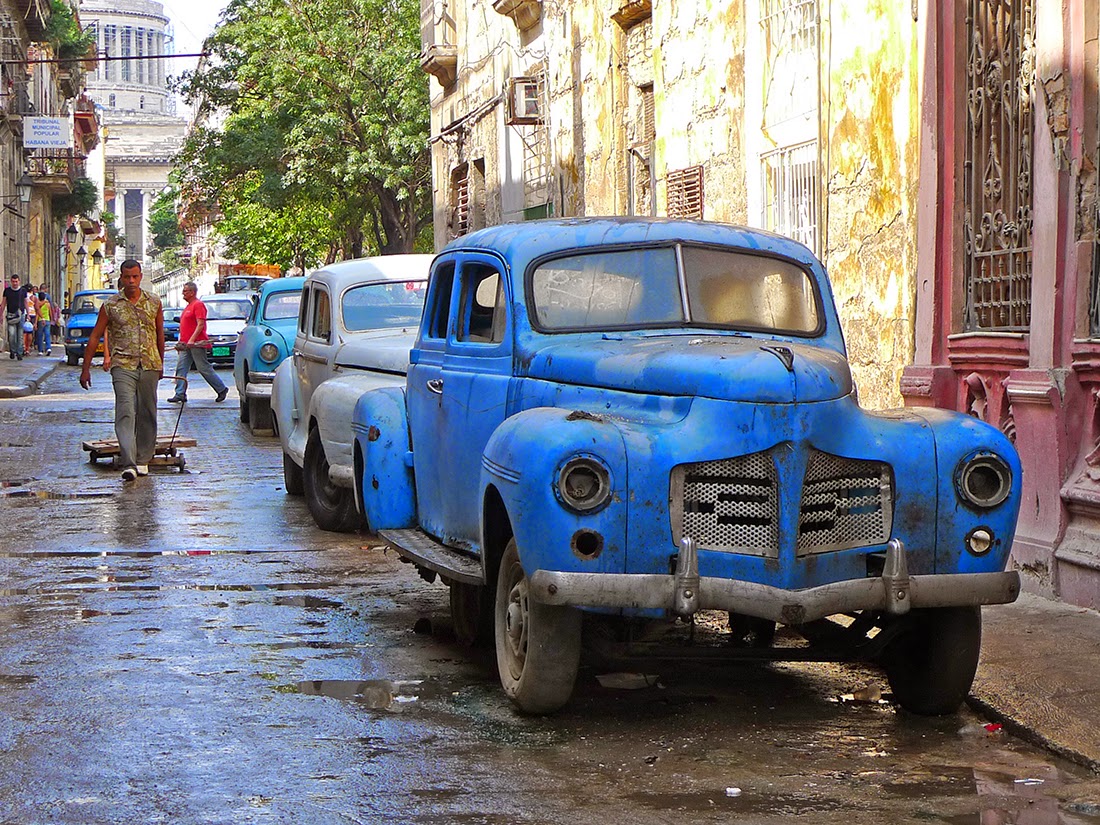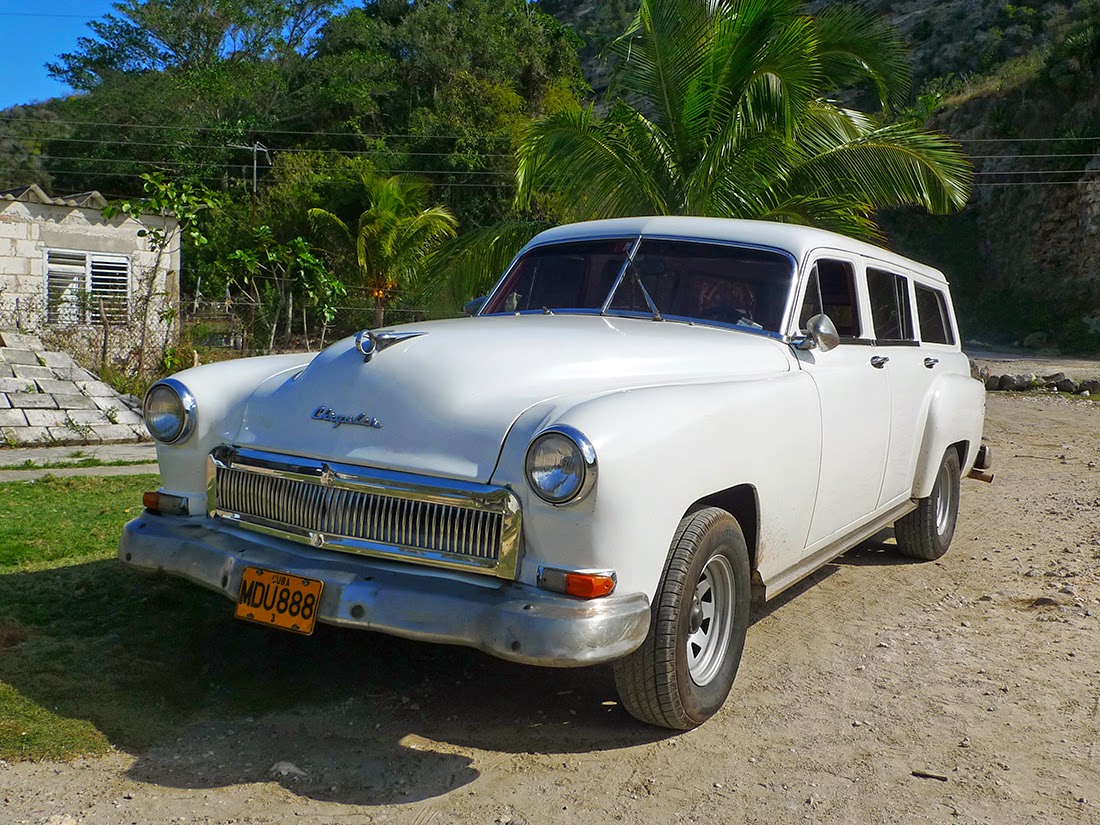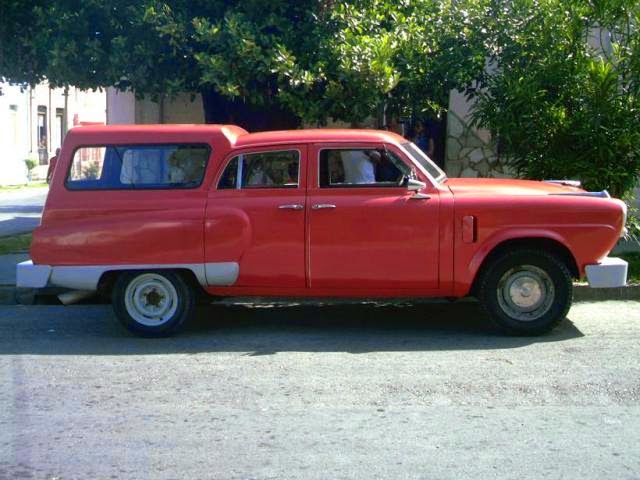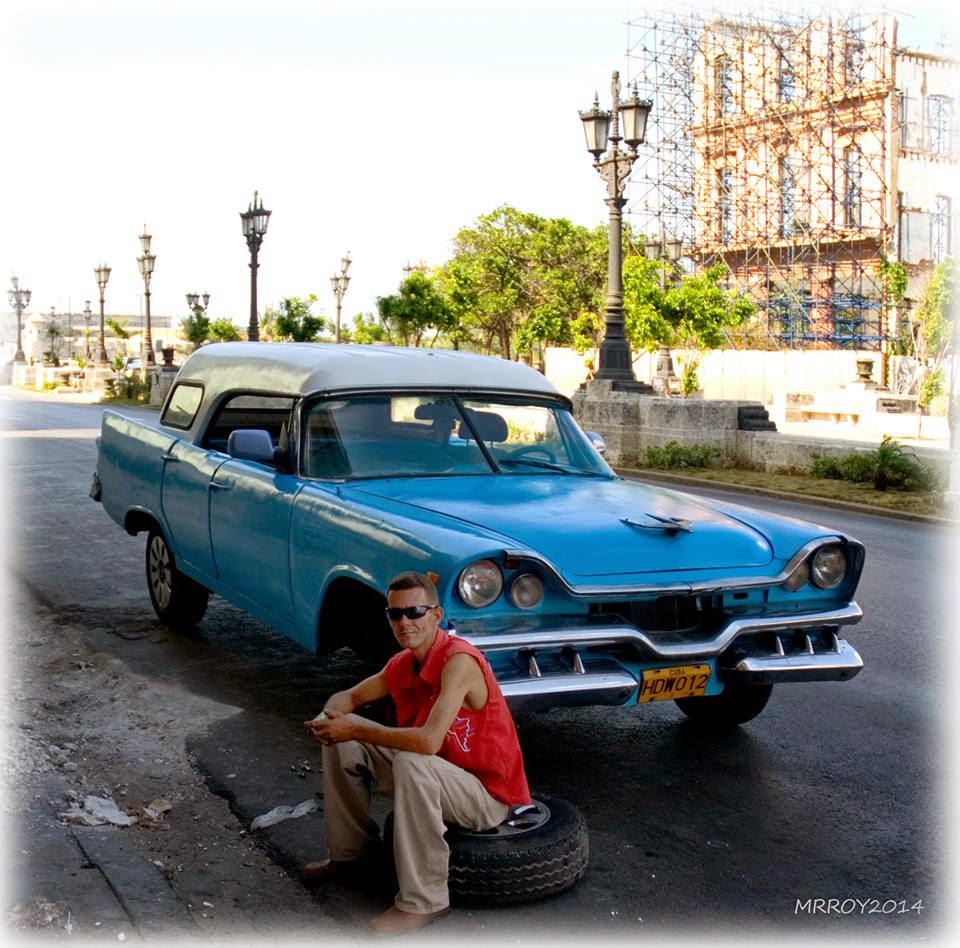 |
| Based on its tank badge, panhead Duo-Glide is a 1960 model. |
"Auténtica Cuba" is the theme of a brilliant advertising campaign by Cuba's Tourism Ministry.
You may have seen the billboards (unless, of course, you live in the United States). Hands sorting dominoes on a weathered table; children racing through a colonial plaza; ballet dancers stretching and reaching at rehearsal. The images convey the tones and textures of an island nation that offers far more than palm trees and beaches.
A photo of the annual Harlistas rally in Varadero would be a natural addition. What could be more authentic than this gathering of flatheads and knuckleheads and panheads, of 45 cubic-inchers and 74s, of springers and Hydra-Glides and Duo-Glides?
And where could such an assembly be drawn not from specialty shops and guarded collections, but from the streets where these honest old machines still serve their owners daily?
Nowhere but Cuba.
You may have seen the billboards (unless, of course, you live in the United States). Hands sorting dominoes on a weathered table; children racing through a colonial plaza; ballet dancers stretching and reaching at rehearsal. The images convey the tones and textures of an island nation that offers far more than palm trees and beaches.
A photo of the annual Harlistas rally in Varadero would be a natural addition. What could be more authentic than this gathering of flatheads and knuckleheads and panheads, of 45 cubic-inchers and 74s, of springers and Hydra-Glides and Duo-Glides?
And where could such an assembly be drawn not from specialty shops and guarded collections, but from the streets where these honest old machines still serve their owners daily?
Nowhere but Cuba.




